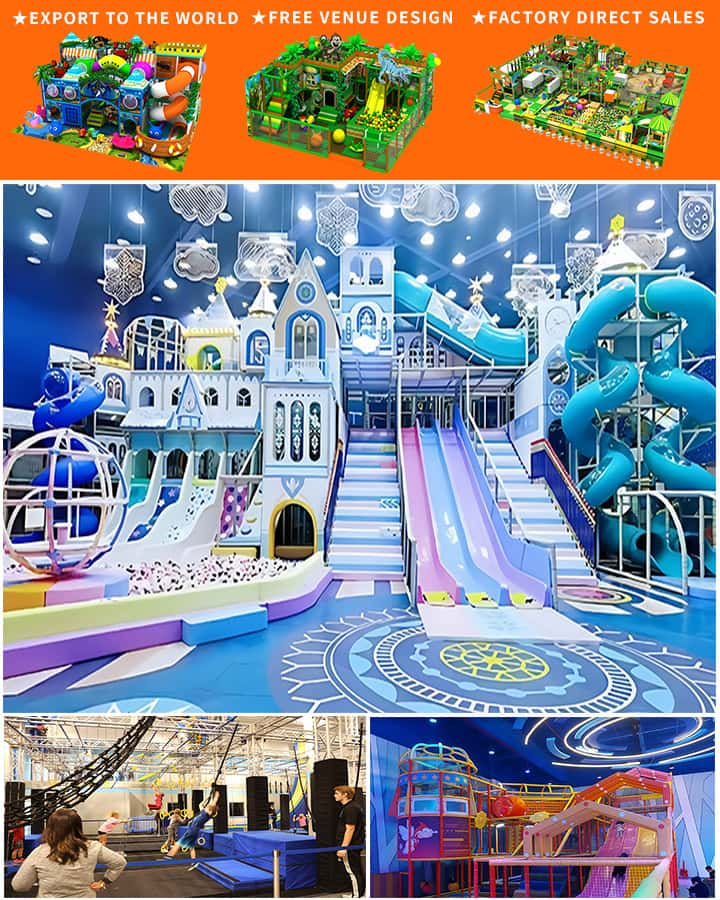Choosing the right outdoor playground equipment for a preschool is crucial in fostering a stimulating and safe environment where young children can grow, learn, and have fun. The selection process should consider the children’s developmental needs, safety standards, and the overall play value of the equipment. Here are some essential factors to keep in mind when selecting outdoor playground equipment for preschoolers.
Safety First: Prioritizing Child Security
Safety is paramount when it comes to playground equipment for preschoolers. Ensure that all equipment meets national safety standards such as the American Society for Testing and Materials (ASTM) guidelines. Look for features like:
- Soft Surfaces: Impact-absorbing surfaces such as rubber mats or wood chips can significantly reduce the risk of injuries from falls.
- Non-Toxic Materials: All materials should be non-toxic and free from harmful chemicals.
- Appropriate Height and Structure: Equipment should be scaled down to fit younger children, with no sharp edges, pinch points, or entrapment hazards.
Developmental Benefits: Encouraging Growth Through Play
Preschool playground equipment should support various aspects of child development, including physical, social, and cognitive skills. Consider the following options:

- Climbing Structures: Climbing walls, ladders, and play structures enhance motor skills, coordination, and confidence.
- Slides and Seesaws: These classic elements encourage physical activity and teach children about cause and effect.
- Sandbox and Water Play: Sensory play areas promote creativity and fine motor skills while offering opportunities for cooperative play.
- Balance and Agility Equipment: Items like balance beams and stepping stones develop gross motor skills and coordination.
Social Interaction: Building Friendships and Social Skills
Outdoor play is an excellent way for preschoolers to build social skills. Group activities on the playground help children learn to share, communicate, and collaborate. Consider incorporating:
- Interactive Toys: Equipment like musical instruments, puppet theaters, and interactive panels can foster group play and creativity.
- Team Games: Items such as oversized building blocks or collaborative play structures encourage teamwork and cooperation.
Aesthetic and Educational Value: Creating an Engaging Environment
Beyond functionality, the aesthetic appeal and educational value of playground equipment can greatly enhance the preschool experience. Look for:
- Colorful Designs: Bright colors and engaging patterns can stimulate visual interest and imagination.
- Educational Elements: Incorporate alphabet puzzles, number games, and nature exploration tools to blend learning with play.
- Nature Integration: Natural elements like logs, rocks, and planters can create a more dynamic and enriching play environment.
Maintenance: Ensuring Longevity and Safety
Regular maintenance is key to ensuring that playground equipment remains safe and enjoyable for years to come. Establish a maintenance schedule that includes:
- Routine Inspections: Regularly check for wear and tear, loose parts, and potential hazards.
- Cleaning Protocols: Keep equipment clean and free from debris to prevent accidents and maintain hygiene.
- Repairs and Replacements: Address any damages promptly to avoid further deterioration.
Conclusion: Crafting the Perfect Playground
Selecting the right outdoor playground equipment for a preschool involves a careful balance of safety, developmental benefits, social interaction, aesthetic appeal, and maintenance considerations. By choosing age-appropriate, safe, and engaging equipment, educators can create a vibrant and supportive outdoor play environment that nurtures young children’s growth and happiness. With thoughtful planning and ongoing care, a preschool playground can be a place where kids learn, laugh, and explore the world around them to the fullest.




